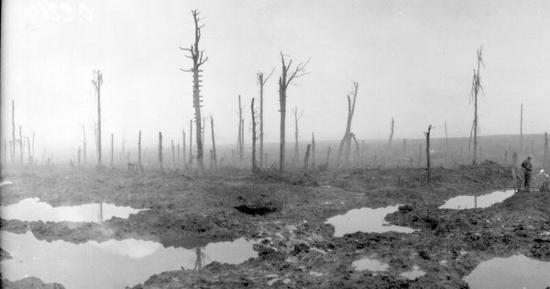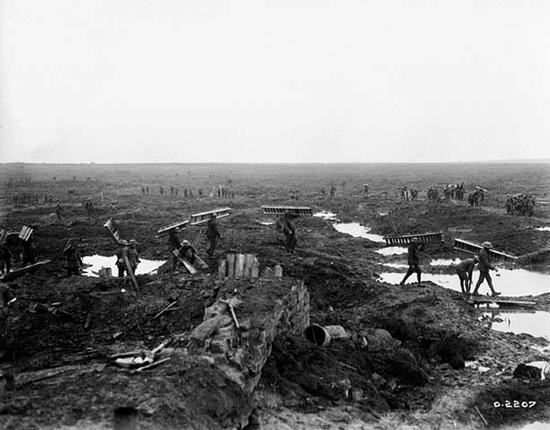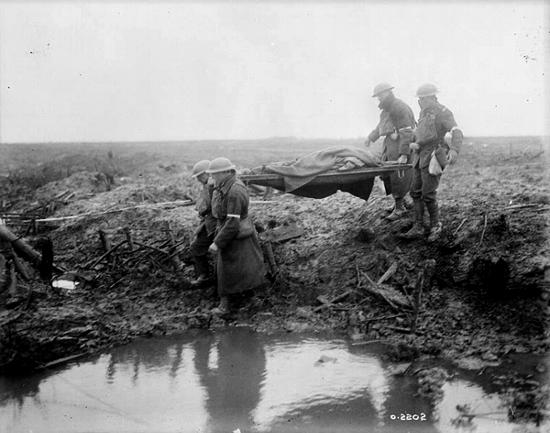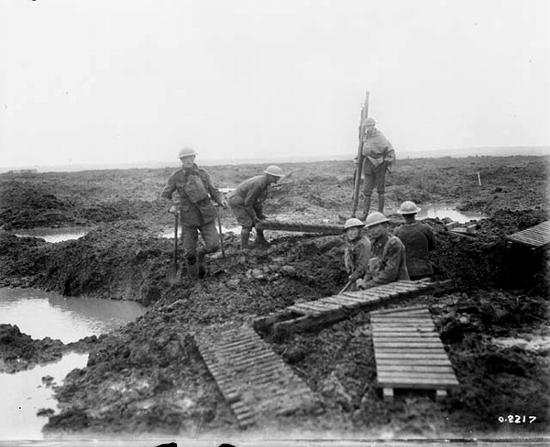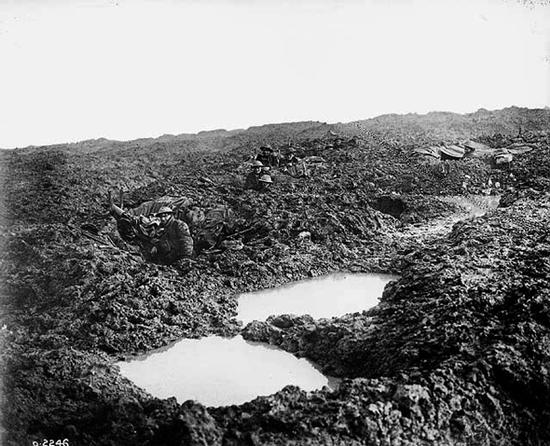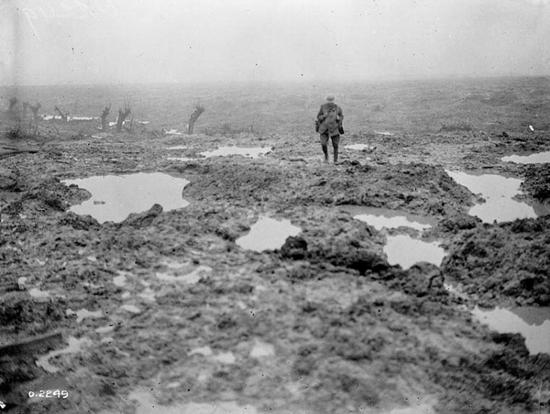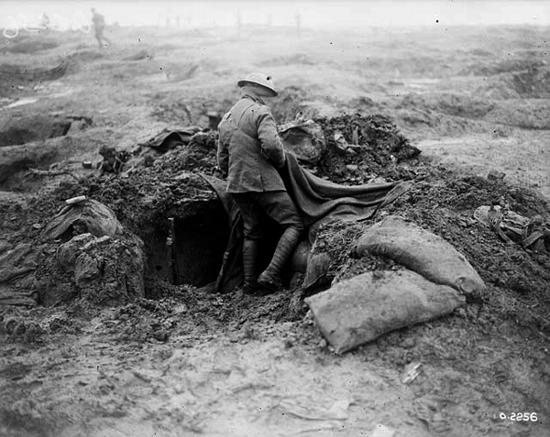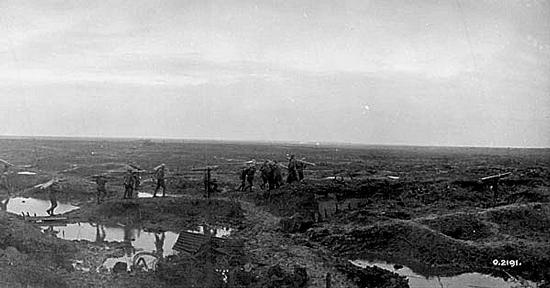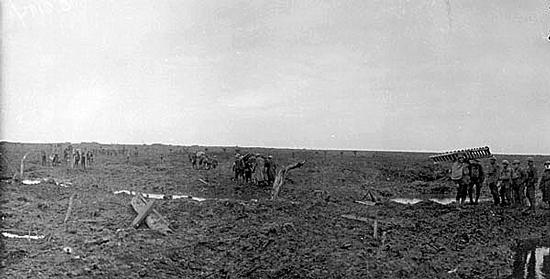A challenging battlefield
The campaign began at the end of July 1917. British, as well as Australian and New Zealand (ANZAC) forces, opened the attack with a pounding artillery barrage. Heavy rains came down the very night the ground assault was launched, however, and shell holes quickly filled with filthy water. The battlefield soon became peppered with countless flooded craters, all too often containing wounded and fallen soldiers. A heavy toll was taken on the attackers as they had to struggle through thick mud with little cover while German machine gunners in pill boxes (reinforced concrete machine gun positions) tore them to pieces. Despite these conditions, the Allied forces slowly gained much of the higher ground as the summer turned into fall. The main objectives of the offensive, however, remained out of reach.

Personnel of the 16th Canadian Machine Gun Company holding the line in shell holes during the Battle of Passchendaele. Photo: William Rider-Rider / Library and Archives Canada / PA-002162







